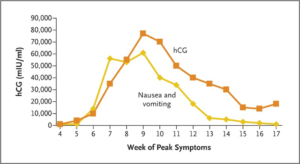Here are a few of the most common pregnancy discomforts & what you can do to alleviate them.
Round Ligament Pain
What is it?
A sharp or stretching pain on one or both sides of your lower uterine segment, especially when you move, cough, sneeze, or turn over. This occurs when the ligaments that hold your uterus in place stretch during pregnancy. The round ligament is what connects the front part of your uterus to your pelvis. As your baby grows and your uterus gets bigger in size, these ligaments stretch and can be painful. This most commonly happens in the second trimester, but is a normal occurrence throughout pregnancy.
How to help:
Try to avoid sudden movements, use your hands to support yourself when rolling over, and standing up slowly with the support of your hands. Avoid rapid or repetitive movements. Try flexing your hips before you sneeze or cough. You can do things to help the pain of the stretching, such as taking baths with epsom salt in them, and doing hip stretches to help relax the ligaments. Here is an example of hip stretches you can do:
Nausea/Vomiting
Nausea and vomiting in pregnancy affects nearly 75% of pregnant women (AFP, 2014). The exact cause of nausea and vomiting is unknown. In most pregnancies, nausea and vomiting starts around 4 weeks in pregnancy and peaks at 9 weeks’ gestation. An estimated 60% of cases resolve by the end of the first trimester, and 87% resolve by 20 weeks’ gestation (AFP, 2014). However, about 1% of pregnant women experience Hyperemesis Gravidum, a condition that occurs when the nausea and vomiting is severe and can cause issues to the mother and pregnancy. If you believe your nausea and vomiting is severe, talk to your provider about medications and treatment. 
How to help nausea/vomiting:
Eat bland, easy to digest foods frequently. (Aim for eating every 2-3 hours, rather than big meals) Such as:
- Crackers
- Bread/Toast
- Fruits
- Peanut butter
- Simple carbohydrates
Vitamin B6 supplements have also been proven to help.
Start with 10 mg every 8 hours, can go up to 25mg every 8 hours. You can also take ½ tab of Unisom (12.5mg), at night, and increase to a full tab (25mg) as needed. Unisom will cause drowsiness so it’s best taken before bed, but the B6 can be taken throughout the day.
Muscle/Back Pains
As your uterus grows and puts more pressure on your pelvic floor, pelvis, organs, and diaphragm, your body may start to develop muscle aches and back pain. Pregnancy back pain typically happens where the pelvis meets your spine, at the sacroiliac joint.
How to help:
- Hot/cold- try ice packs, heating pads, muscle rub (Icy Hot)
- Epsom salt baths- The warm bath water relaxes muscles and the epsom salt is commonly used by athletes as a muscle soreness aid.
- Add about 2 cups of epsom salt to warm bath water, can soak as often as needed
- Take a daily magnesium supplement
- Especially helpful for leg cramps, muscle soreness, and difficulty sleeping
- Try the brand “CALM” Natural Vitality drink mix

- Take up to 350mg Magnesium per day, but be careful, too much magnesium can cause diarrhea
- Tylenol (Acetaminophen)
- Safe for pregnancy, don’t take regularly but can help pain temporarily
- Try 650mg every 4-6 hours
- Never take more than 4,000mg per day
Acid Reflux
Acid reflux is one of the most common pregnancy discomforts we see. When acidic gastric fluid flows backward into the esophagus, resulting in heartburn.
Why does it get so bad during pregnancy?
A combination of the increased pressure on your diaphragm and stomach from your growing uterus, and the hormone changes that cause the muscles in your esophagus, and sphincter that goes to your stomach to relax, causes increased acid reflux. The pregnancy hormones also cause your digestive system to slow down (often causing constipation, as well).
How can I help?
- Eat smaller, more frequent meals
- Increased pressure in your stomach from large meals can cause more acid reflux
- Drink water between bites of food
- Aids with digestion and decreases acid production
- Try to avoid laying down after eating (don’t eat a few hours before bed)
- Chew sugar-free gum after meals
- The increased saliva can neutralize acid that comes into the esophagus
- Try papaya enzymes
- These are small edible tablets that you can chew after meals or any time you feel acid reflux
- Try tums or other over the counter medications
- Tums are safe during pregnancy, but over time, your body may require more and more of these antacids as you take them more frequently
- Ask your provider about other medications that are safe for pregnancy
- **Avoid Pepto Bismol during pregnancy**
Constipation
Why does it get so bad during pregnancy?
When it comes to common pregnancy discomforts, constipations is very frequently listed near the top of the list. Constipation during pregnancy is due to the increase in progesterone hormones that relax the intestinal muscle causing food and waste to move slower through your system.
How to help:
- Drink more water (80-100 ounces, or 3 liters per day!)
- Increase your vegetable intake
- Eat a vegetable at every meal (sautee spinach in your eggs, add a handful of kale in your smoothie)
- Add broccoli, cauliflower or other high-fiber vegetables to your meals
- Take a probiotic supplement daily
- Ideally, one with lactobacillus in it for added vaginal health benefits!

- Ideally, one with lactobacillus in it for added vaginal health benefits!
- Try a Magnesium supplement
- Up to 350mg per day
- If the above don’t work, try an over-the-counter supplement safe for pregnancy:
- Stool softener (Colace)
- Miralax
- Take one capful every few hours until you have a bowel movement, then continue taking 1-2 capfuls per day until you are regularly having 1-2 soft BMs per day
That was our list of the most common pregnancy discomforts & how to resolve them. Reach out if you have any questions related to this article or any other topics related to pregnancy. Don’t forget to take a look at our recently updated list of courses here.
Sources
Am Fam Physician. 2014 Jun 15;89(12):965-970
N Engl J Med 2010; 363:1544-1550 DOI: 10.1056/NEJMcp1003896






